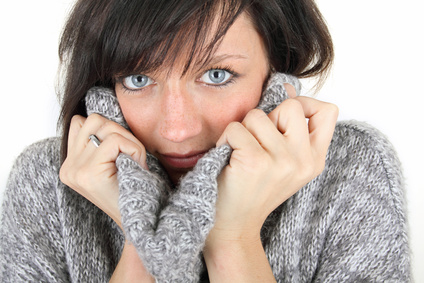Even though I deliver quite a few presentations each year, I still get nervous every time I’m about to speak. It’s normal to feel this way before a speech. But for some people, they feel nervous over speaking with anybody (a cashier or clerk at a grocery story, a customer service representative on the phone, speaking with a co-worker whom they worked with for years…and many others). When this happens that frequently, it’s a sign the person may have social anxiety.
Social anxiety is when a person fears they are being judged or evaluated by others. As a result, they feel embarrassed or humiliated about the idea of interacting with people, even though they logically know their fears are unrealistic and disproportionate. Social anxiety is also the most common form of anxiety, affecting anywhere from 7% to 13% of the population.
We all experience a degree of social anxiety. At some time or other, we all feel a little anxious of having to socialize with one particular person, or a group of people. But, when does social anxiety become a problem? When are ‘normal’ amounts of social anxiety no longer ‘normal’?

People with social anxiety have a fear of being judged, evaluated, or humiliated when they speak. (image courtesy of fotolia.com)
Social anxiety becomes a diagnosable problem when it bothers you enough that you can no longer follow-through with your daily routine. If you are afraid to go to school or work, if you are avoiding places, individuals, or responsibilities that you need to attend to because you are just too anxious, then your social anxiety needs to be addressed.
Two Approaches to Lessen Social Anxiety
Here are a couple of approaches for changing and lessening the amount of social anxiety you experience.
1. Challenge your biased thinking. There are a few ways that our thinking can increase social anxiety (and anxiety in general). One way is known as Mental Filtering. This happens when we filter out all the positive and harmless social interactions we’ve had throughout our lives, and instead choose to focus only on the negative ones. By doing so, we are perpetuating a false belief that our interactions with others will be humiliating and negative. Therefore, make sure you reflect on all the positive and successful occurrences of when your thoughts and beliefs were not supported.
Also, research has shown that people with anxiety are more likely to interpret others’ neutral faces as negative. Remember this the next time you’re speaking with someone. Just because you may not be able to “read” their faces, doesn’t mean they are negatively evaluating you.
2. Confront your fears. I remember getting into a car accident many years ago. I was making a sharp turn and my car jumped over the curb, breaking the wheel’s axle. Luckily, no one was hurt. Afterwards, when the car was repaired, I was hesitant to take any routes where I knew there would be sharp turns. But, I knew that if I continued avoiding those routes, I would continue to be anxious about driving.
When we avoid the things that create anxiety, we never learn to overcome them. Instead, we remain prisoners to the things that make us anxious. Basically, we can only overcome our fears if we confront our fears.
One strategy is to start small. List out all the things that make you socially anxious. Then, slowly start to climb your way up that list by confronting those fears. For example, if you are afraid of delivering a speech in front of a large group of people, start by delivering a speech to only one person. Then two. Then 5. By challenging yourself on the small things, you’ll develop the confidence and skills to challenge the bigger things.
In the end, if you want to change how you feel (whether it’s social anxiety, depression, or anger), start by changing the way you think and the way you behave. Eventually, you’ll find yourself overcoming the things you once avoided.
What are some of the things you do and tell yourself to be less anxious in front of others?
Links related to this post
- Click here for a post on how changing your behaviours can change your mood
- Click here for a link to the Anxiety Association of Canada
- Click here for an article on different types of anxiety disorders
- Click here for an article that discusses some biological and psychological treatment approaches on social anxiety

